If you tend to judge books by their covers, you will love today’s book reviews because (almost) all of these covers are gorgeous! Of course I have a lot of words to add to those covers: buckle in, we have a wild ride ahead of us with these reviews. Let’s get to ’em!
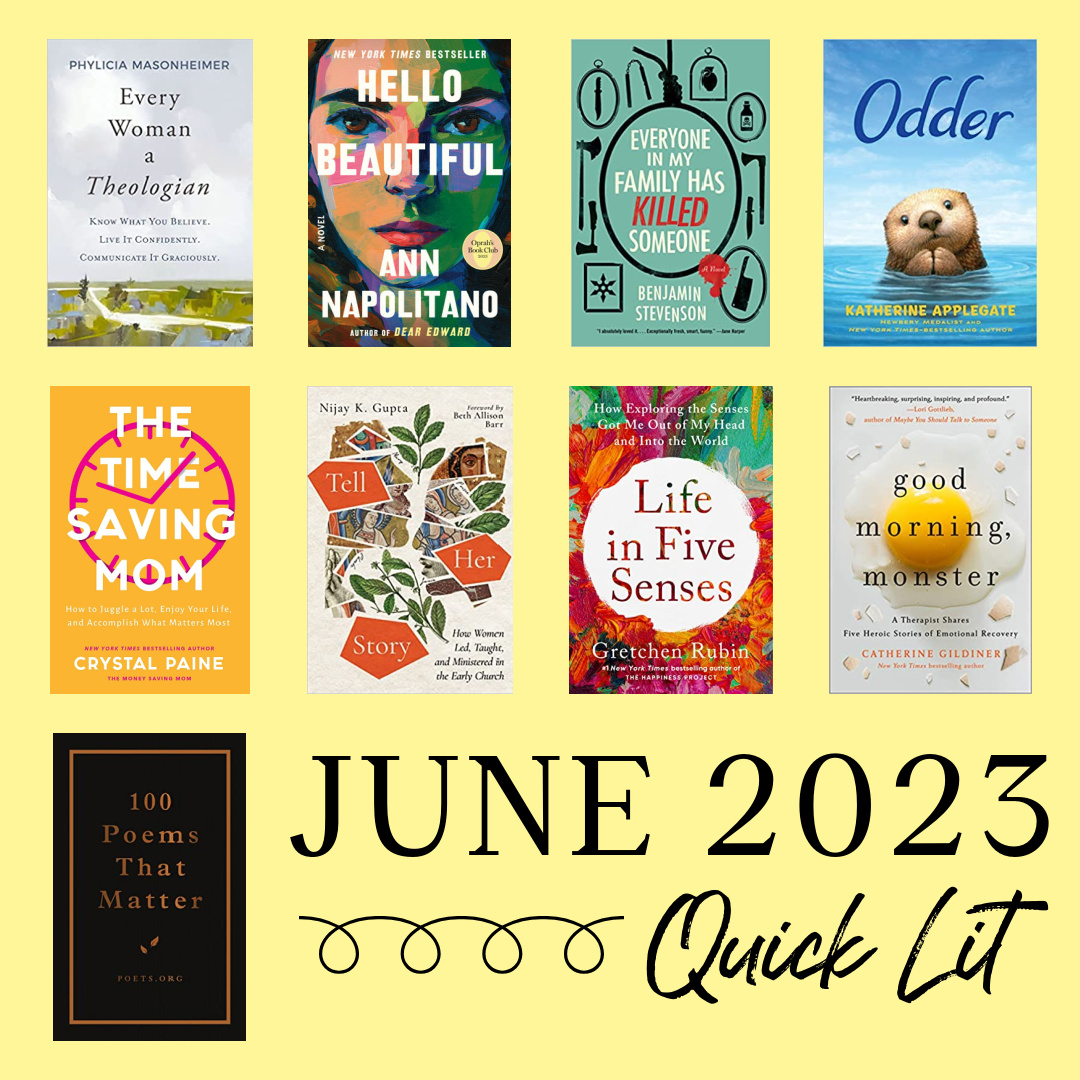
NONFICTION
100 Poems That Matter, from the Academy of American Poets: I’m not a frequent poetry reader and would like to read more, but I struggle to find collections I enjoy. I stumbled across this one during a search on Libby and was eager to dip into the diverse collection with the captivating title. These 100 poems come from 100 different poets, both classical and contemporary, organized into six chapters: Poetry & the Spirit; Poetry & Grieving & the Blues; Poetry & Social Justice; Poetry & the Environment; Poetry & the Body; Poetry & Desire.
Some poems were familiar, others were brand new to me. There were a few poems that took my breath away: “Desiderata” from Max Ehrmann, “On Joy and Sorrow” by Kahlil Gibran, “If You Should Go” by Countee Cullen, “One Art” by Elizabeth Bishop, and especially “Mid-Term Break” by Seamus Heaney. Others were forgettable, and some were decidedly cringeworthy.
The anthology’s diversity is its biggest selling point, especially for someone like me who is still working to discover what types of poetry I enjoy reading. Through this collection I found that I really like poems that tell a full story, capture a unique moment, or examine an aspect of humanity. I am fine with poems of all styles (spare, rhyming, longer form) but especially like poems that have some uniqueness of format.
Selections in this anthology also revealed to me that I do not care for poems that are overtly political or agenda driven. Unfortunately, more than half of the poems here fall into that latter category, leaving me to question how much these (mostly contemporary) political poems will fit the “Poems That Matter” label in the long-term, and how many are poems that matter in this moment in time.
The selections here are dense and layered; I would recommend reading just one or two poems a day so as to savor and contemplate them. I was glad I took my time with this. I was also glad I took the time to read the introduction (with its commentary on the purpose of poetry and comparisons to music) that set me up for a meaningful reading experience.
My Rating: 4 Stars // Book Format: Kindle
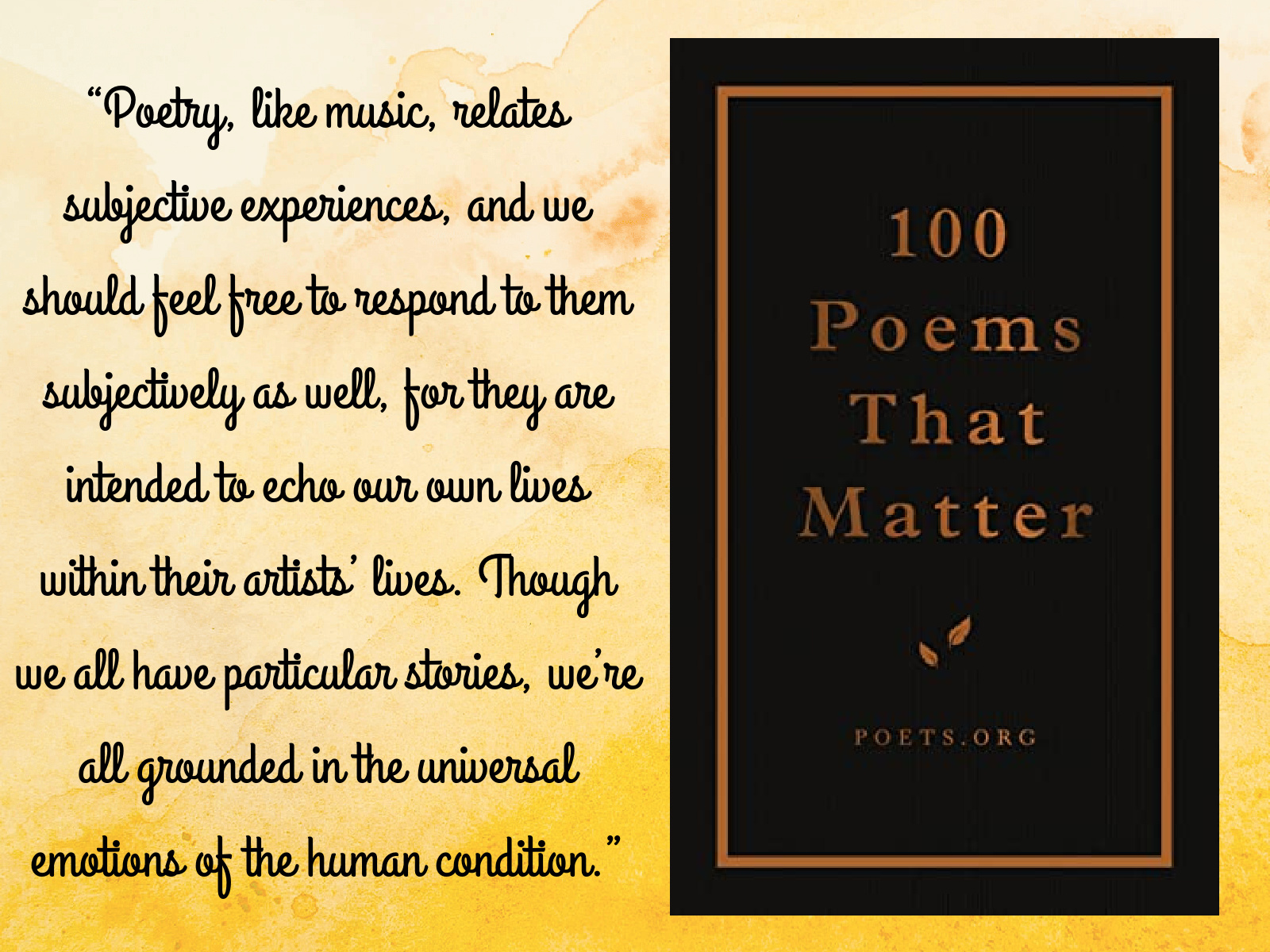
Good Morning, Monster: A Therapist Shares Five Heroic Stories of Emotional Recovery, by Catherine Gildiner: Before I write anything else, I want to preface this review by saying this is one of the saddest things I have ever read. The tragedy and trauma within the stories shared here are beyond what I could have imagined; if this were a novel, I would have side-eyed the author for overdoing it on the trauma scale, but this is nonfiction and heartbreakingly real. I tend to be a sensitive reader so I was surprised I was able to handle this, but please know going in that this contains nearly every trigger imaginable, many referenced in this review. . . .
Therapist Catherine Gildner encountered many difficult stories in her career; here she presents five of her most memorable patients, whom she also describes as the most heroic people she’s met. Included in this group are victims of sexual abuse at the hands of their parents; a woman who raised her younger siblings in an isolated cabin; a Native American who endured years of abuse in a Catholic school for Indigenous children; a first-generation Chinese immigrant who experienced extreme neglect; and the daughter of a narcissist whose mother greeted her every morning with the “Good Morning, Monster.”
Gildner shares the stories as they were presented to her, unraveling parts of their story to offer a complete portrait of her patients, their histories, and the ways that their trauma led to present-day challenges (sexual dysfunction, workaholism, split personality disorder, etc.) These five individuals are indeed heroic, having experienced the deepest levels of evil and survived. I was intrigued by Gilder’s methods and appreciated her commentary on how and why she addressed issues in the way that she did. She unpacks psychological ideas and terms without getting too clinical with her explanations, while also helping us see the patterns and connections psychologists look for. This is very much an insiders’ look at the therapy process (with a more Freudian approach than what I’ve experienced in my own counseling), in addition to serving as a portrait of the best and worst of humanity.
This is quite a bit like Maybe You Should Talk To Someone (one of my favorite books ever), but where that book intermingles the patients’ stories with the author’s own therapy journey, this one focuses just on Gildiner’s patients. It’s harder than that book, but every bit as compelling. I rarely listen to audiobooks longer than ten hours; this one was over thirteen hours but I sped through it, eager to learn more of each of these five individuals’ stories. (I will note that I didn’t care for the narrator and found some of her character voices strange, but even this didn’t keep me from continuing to press play).
As I mentioned at the beginning of the review, this is one of the hardest/saddest things I have read but I am glad to have met these people. I am inspired by their resilience, and their stories were massive empathy-boosters for me in their reminder that behind every hurting person is a story, possibly one I would never have fathomed.
My Rating: 4.25 Stars // Book Format: Audiobook
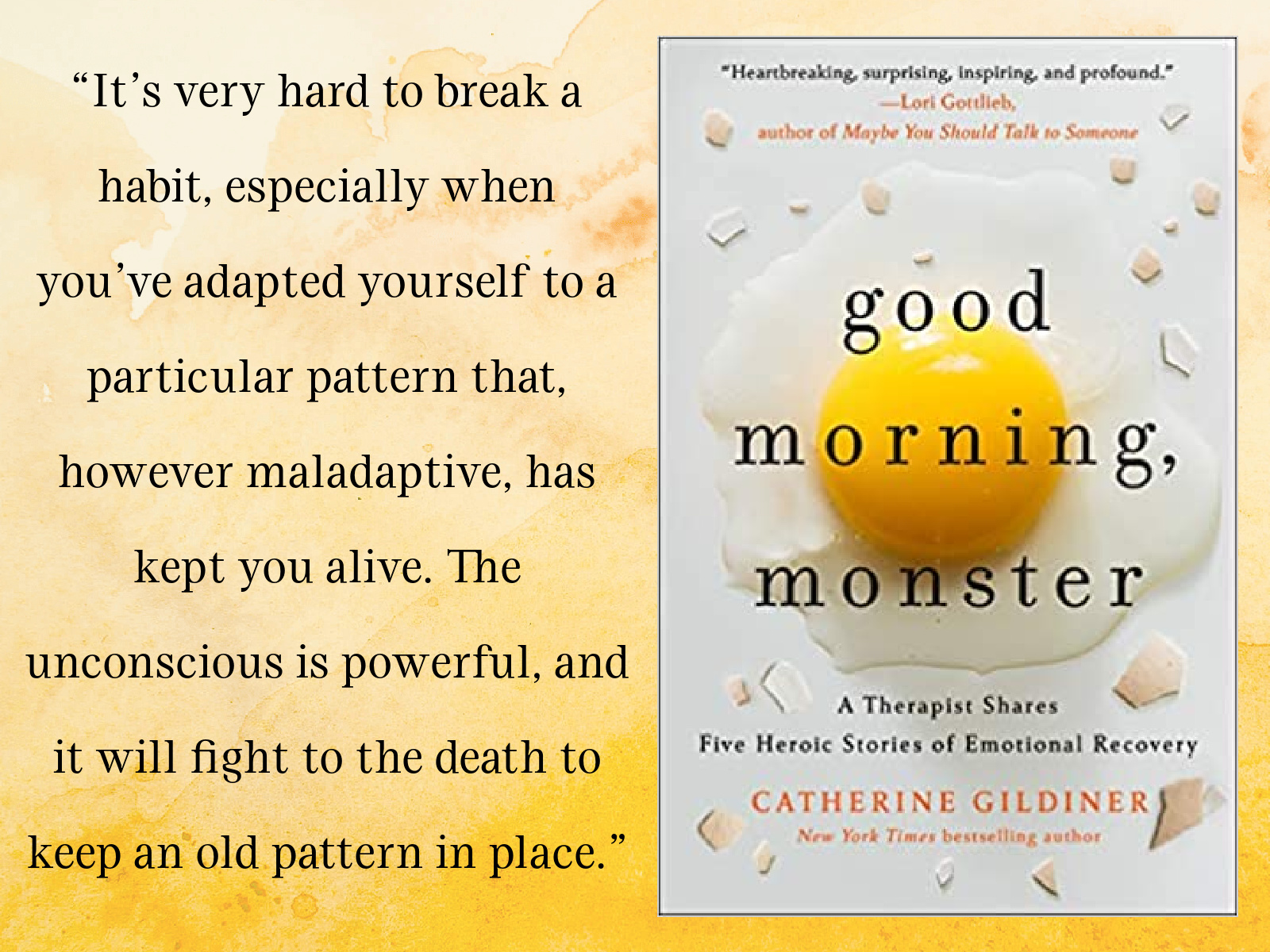
Tell Her Story: How Women Led, Taught, and Ministered in the Early Church, by Nijay K. Gupta: Few issues are as controversial within the modern Christian church as that of women in leadership. While some denominations ordain women and see them as equal partners in ministry, other streams of Christianity allow only men to teach, preach, and pastor; this group points to the prominence of mostly male leaders within the early Christian church, as described in the New Testament. But there is ample evidence within the New Testament that women were not only present but also active in ministry in the Church’s formative years. In this book, Biblical scholar Nijay Gupta tells the stories of these women who served as strategic leaders, teachers, messengers, apostles, and ministry partners.
In Part One, Gupta lays a historical/theological foundation for women in ministry through an examination of women in the Old Testament and in the ministry of Jesus. He gives sociological and cultural context to the stories shared later in the book through an examination of gender roles in Biblical times, explaining how cultural norms would have played into what IS and IS NOT shared within the New Testament Narratives. (For instance, what place did women hold in society at the time, and how was that reflected or not reflected within the Church?).
In Part Two, Gupta examines the lives of specific New Testament Women who were equipped for ministry and served as equal partners alongside early male apostles and church leaders. It is these women’s stories that are the focus of the book, but in the final few chapters Gupta also address several concerns related to women in contemporary ministry and how these can be reconciled with the stories of female leaders of the early Church. Specifically, Gupta examines the texts of Paul prohibiting women from teaching in the Church (which Gupta argues was a context-specific admonition not to be generalized to all women) and the texts about women submitting to males within the households (texts that are also misunderstood by modern readers).
As I stated above, this is a controversial subject within the church today and one in which my own convictions have evolved. I was appreciative of Gupta’s strategy of doing more showing than telling, examining the stories of early church women without doing too much extrapolating to our current context. Much of Gupta’s analysis is straightforward and difficult to refute; in other areas, he seems to be reading into the text in ways that are less unobjectionable, though he is candid about aspects of his interpretation in which he may be taking liberties. I can’t say that I fully agree with every point made in the book, but for the most part his analysis is Biblically sound and thoroughly researched (as evidenced by more than fifty pages of End Notes!)
With controversial topics such as this one, the messenger matters: the fact that this is written by a New Testament professor and author of many other academic books about the Bible adds to its credibility, as does the fact that Gupta is a MAN addressing the issue of women in leadership. Right or wrong, I personally was more receptive to Gupta’s commentaries knowing that his work on this subject was not self-serving.
The subject matter here is very academic, but Gupta’s writing is accessible for the average reader. This keeps the book from being a dry read, though I would have liked a slightly more scholarly take and will likely seek out more technical/detailed books on this subject in the future as I’m interested in digging deeper into this topic. This book has certainly answered many of my questions while prompting even more! I’m specifically thinking through the explicit implications for women in ministry today; I am connived we women DO have a place within the church and I am curious how high/far that place can and should extend.
I would recommend this book to readers on all sides of the egalitarian/complementation debate, as it offers a lot to think about and discuss and sheds light on a topic that impacts all Christians.
My Rating: 4 Stars // Book Format: Audiobook
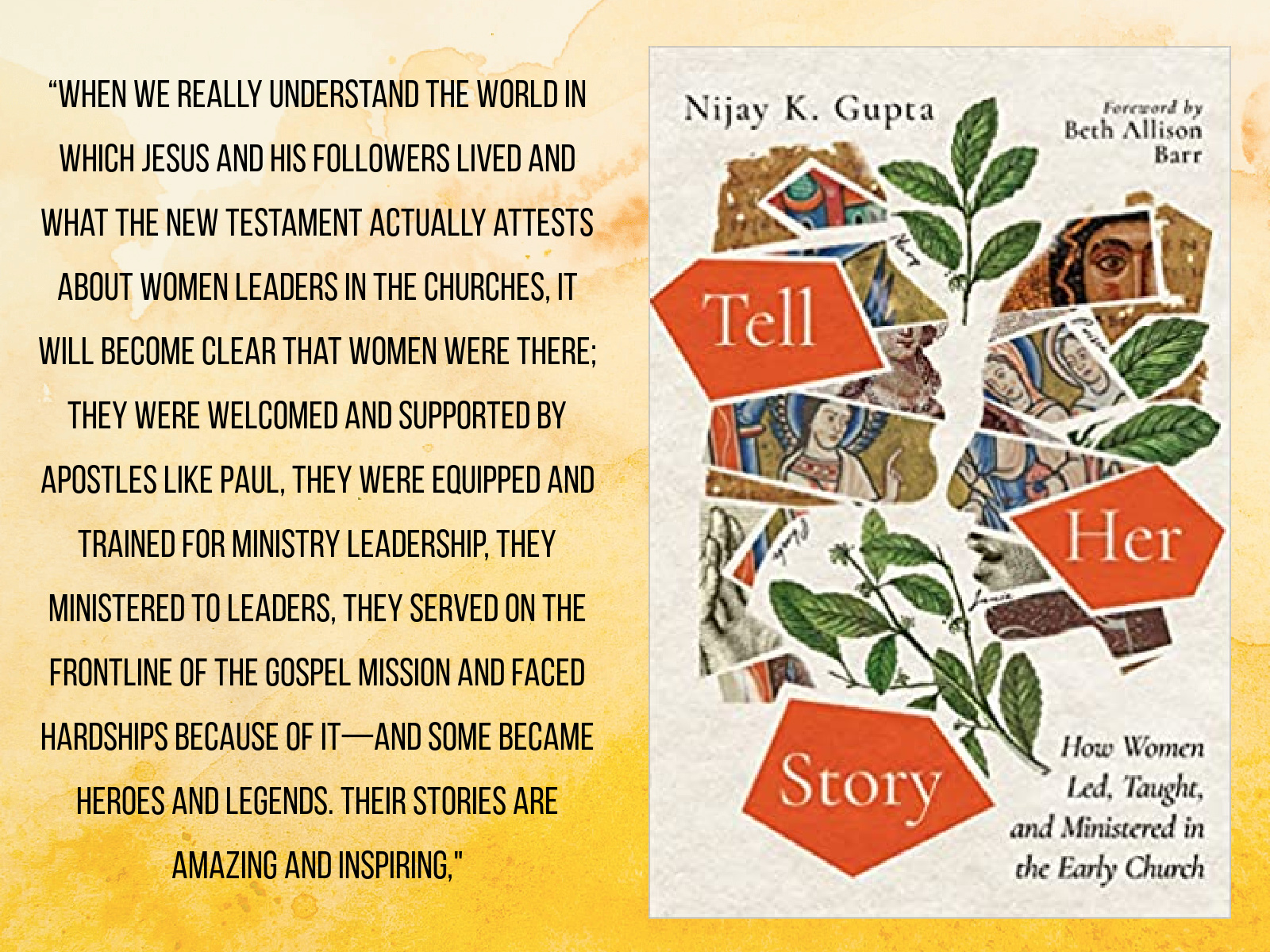
Every Woman a Theologian: Know What You Believe. Live it Confidently. Communicate it Graciously, by Phylicia Masonheimer: I dream of going to seminary; hopefully it will one day be a reality, but until then I am earning my own makeshift version of a theology degree through personal Biblical study and various other resources. Phylicia Masonheimer has been an invaluable teacher (I’ve learned so much from her podcast, emails, and other resources offered on her website), and this book in particular is an absolute gold mine of information!
Phylicia Masonheimer believes in the value of solid Biblical understanding and good theology (“the study of the nature of God and His truth”) for ALL Christians, not just those in Christian leadership. Our theology offers intellectual satisfaction, but it is so much more: it also provides direction and an understanding of our purpose and identity. Phylicia shows us how faith and intellect go hand in hand, then walks us through the process of loving God with our minds as we come to a deeper understanding of various aspects of theological understanding. Within the body of the book we are given deep dives into Bibliology (the doctrine of Scripture); Theology (the doctrine of God); Cosmology (the doctrines of Creation, Humanity, and Sin); Christology (the doctrine of Christ); Soteriology (the doctrine of Salvation); Pneumatology (the doctrine of the Holy Spirit); Ecclesiology (the doctrine of the Church); and Eschatology (the doctrine of Last Things). Within each chapter, Phylicia gives an overview of the subject, providing the information that all Christians agree on and also detailing various differing perspectives (for instance, in the chapter on Soteriology she walks us through different denominations’ understanding of justification and sanctification; in the chapter on Eschatology she differentiates between various understandings of the second coming; and the chapter on Ecclesiology explains the different sacraments held by each denomination).
It’s been a while since I have read a book packed with so much new information! I read a lot of books about and relating to the Bible and faith (and I enjoy them) but most of those other books could be described as useful repackaging of familiar concepts. This book does cover a lot of ideas I already knew and understood, but there is a lot that was brand new! I especially enjoyed learning about church history and the specific differences between Christian denominations and even how and why various denominations were formed. Every chapter is thoroughly researched and thoughtfully articulated, packed with great insight, strong truth, and abundant grace.
I love that Phylicia uses academic terms and language, not dumbing down the content in any way. That’s not to say that this book isn’t approachable, because it absolutely is! There is a ton of information and I found myself taking notes and highlighting and wanting to reread, but it didn’t feel too heady or overly intellectual. Phylicia brings the ideas into the day-to-day with (beautifully written) vignettes from her own life and faith walk, and she reinforces the importance of applying these studies and not just accumulation more and more knowledge.
I appreciated the nonpartisan presentation of differing perspectives. Phylicia is unwavering on the core tenets of faith (such as Christ’s deity and the inerrancy of Scripture) while holding nonessential issues with an open hand, discussing various interpretations so fairly that I often had no idea where she personally lands on many of these issues. The focus throughout the book is on helping readers discern the truth for ourselves, not hand feeding us Phylicia’s own understanding of the truth.
This book is going on my forever bookshelf and I can’t wait to recommend it to friends; I’d even like to work through the accompanying study guide with a small group. I’m so thankful to Phylicia Masonheimer for utilizing her gifts of teaching and wisdom to write this book that has the potential to effectively catechize a whole generation of Christian women. (And on that note: though the title suggests it’s a book for women, there is nothing at all within the book itself that is female-specific; Luke also read the book and found it quite helpful, and says he would recommend it to other male readers.)
This book makes an excellent companion to Women of the Word: that book shows HOW to study the Bible, and this one helps know how to interpret it!
My Rating: 5 Stars // Book Format: Kindle

The Time-Saving Mom: How to Juggle a Lot, Enjoy Your Life, and Accomplish What Matters Most, by Crystal Paine: We all get 24 hours in every day, but for busy moms it can seem like we get far less time than the average bear. Many of us see other people (even other moms!) getting far more done than we could ever hope to accomplish, and we wonder how they manage to do it all. Crystal Paine is one of those moms who is successfully juggling MANY responsibilities—raising and fostering six children, including special needs children, from teens down to newborns; running her own business; actively participating and serving at her church; and more—with a smile on her face! After years of sharing how she manages her family’s money (through her business Money Saving Mom), she has written a book about how she budgets and spends her time.
In this book, Crystal shares her four-step time management system that involves 1) Prayer; 2) Prioritizing; 3) Planning; and 4) Preparing. Within each chapter she explains why this step is critical and how it is implemented as well as quick, actionable time-saving tools and suggestions from other busy moms.
This is a quick book (under five hours on audio) which is ideal for moms without much time and in need of some real help, fast. But don’t let its size fool you, this is a great resources that delivers on its promises of helping moms figure out how to spend our time and then put that time to work for us. I encountered a number of tools I’m already utilizing (like habit stacking, beginning the day in prayer, and planning out my time) but there were some great new-to-me ideas. I especially love Crystal’s idea for choosing six priorities and cycling through those to address two each day (meaning that each priority gets dedicated attention twice per week). Crystal’s habit of praying through the specific scheduled items of every day was also revelatory for me. Some of the ideas like habit tracking and time-blocked to-do lists aren’t necessarily suggestions that I’m looking to try but I can see how they would be very helpful for others.
I will note that some of the tips seem pretty unrealistic; specifically, I found the sample routines/schedules unhelpful as the suggested times are SIGNIFICANTLY shorter than how long I know these things take me (for instance, Crystal suggests 20 minutes to make, eat, and clean up breakfast; in our house, that requires a full hour). But just seeing schedules laid out was useful in helping me think through the types of items to consider in structuring my time.
Some productivity books leave me feeling overwhelmed. This one left me hopeful that I can be making better use of my time, and also encouraged that I’m already doing a pretty good job at fitting in the tasks that matter most to me.
My Rating: 4 Stars // Book Format: Audiobook (Followed along on Kindle)
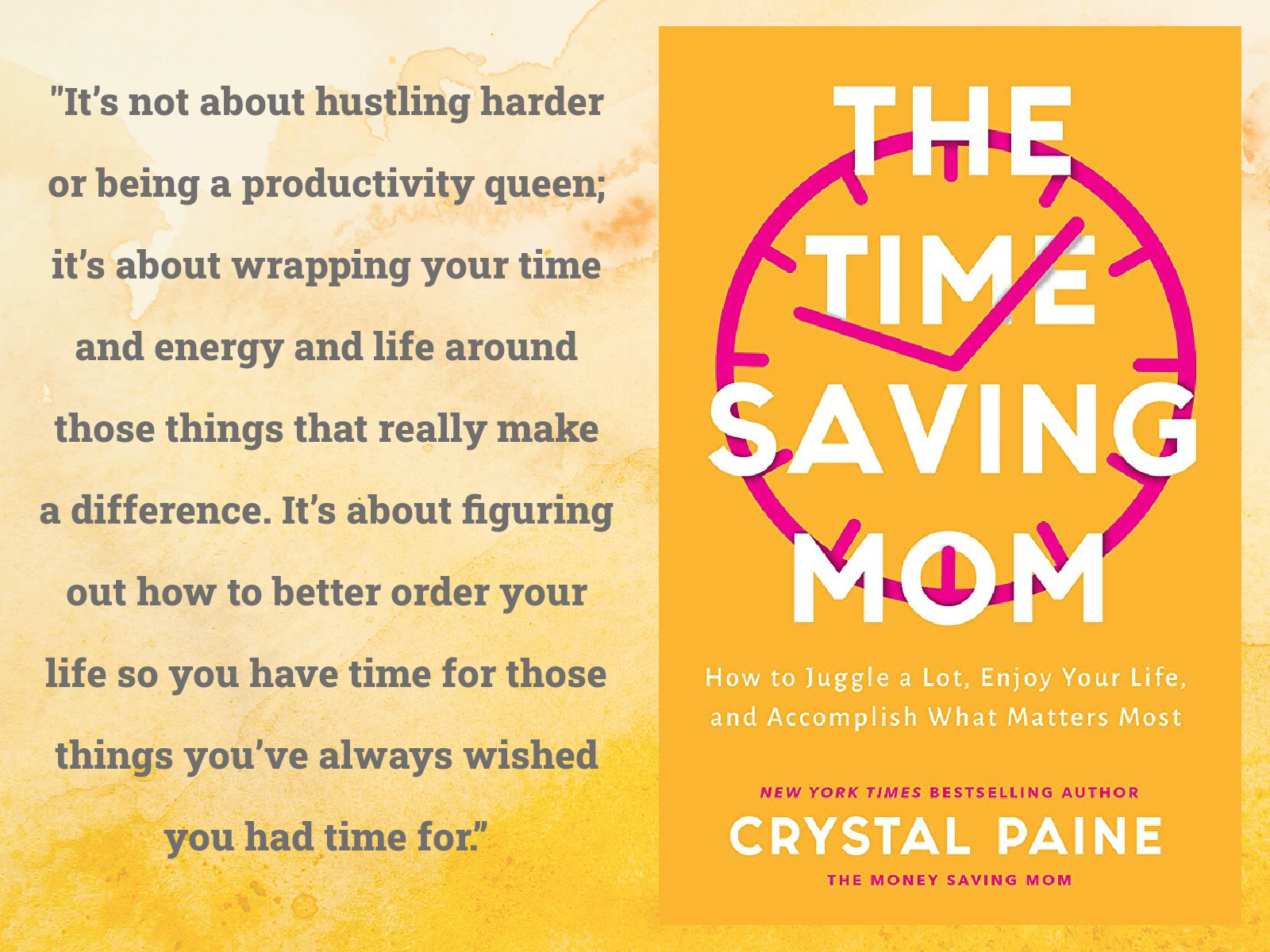
Life in Five Senses: How Exploring the Senses Got Me Out of My Head and Into the World, by Gretchen Rubin: Gretchen Rubin has made a career of studying and sharing about human nature and happiness, but it took a cursory eye doctor appointment to draw her attention to an aspect of happiness she’d neglected: that of her five senses. Gretchen realized that much of her pursuit of happiness had been intellectual, and that an exploration of the five senses—seeing, hearing, smelling, tasting, and touching—could be a gateway to fully embodying happiness with more than just her mind.
In this book, Gretchen takes us with her as she explores her senses, learning to appreciate them through various experiments and new practices. Through daily visits to the Metropolitan Museum, excursions to unique concerts and exhibits, classes (in things like perfumery), and challenges (in shopping, taste-testing, and more), Gretchen grows to better understand herself as she more fully appreciates each of her five senses.
This book is more than a memoir: Gretchen works science, trivia, psychology, and history into each chapter, giving us a comprehensive education on the how and why of the physical world. The book reads like an ultra-engaging trip down a Wikipedia rabbit hole filled with only the most interesting entries. Having listened to Gretchen’s podcast for MANY years, and read nearly all of her other books, I worried this would be a rehashing of information, but this book feels entirely fresh. I was familiar with a few of the ideas and stories, and I appreciated them more for having “known” Gretchen prior to reading, but this was not at all a repackaging of her other works.
This would make a fun book club read, and I’d love to explore my five senses along with a small group (though I’m already doing it on my own!). It’s also a perfect gift book that can be read and appreciated by almost any reader (or even non-reader), and the hardcover is a lot of fun with interesting end papers and several photographs.
This book has seriously recharged my own appreciation of the physical world, heightening my awareness to senses I’ve neglected (like scent) and even helping me enhance my most-appreciated senses (like sight). Love this so much! It might be my favorite Gretchen Rubin book yet! (This book club-style discussion between Gretchen and her sister Elizabeth was the cherry on top of an already scrumptious reading experience.)
My Rating: 5 Stars // Book Format: Print

FICTION
Odder, by Katherine Applegate: Odder is a playful otter who, since being rescued and rehabilitated by humans at the Monterey Bay Aquarium when she was a pup, spends her days frolicking in the ocean water off the coast of central California. When Odder is attacked by a shark, she is once again rescued and returned to the aquarium. But the tragedy has changed Odder, who is now cautious and fearful and filled with remorse. Will she be given a name, indicating she will spend her remaining days at the aquarium? Or will the well-meaning humans continue to identify her by a number in hopes she will one day return to the seas and her life of playfulness and adventure?
This novel, told in verse, is unlike anything I’ve read! Inspired by the true story of the Monterey Bay Aquarium’s program that pairs orphaned otter pups with surrogate mothers, it’s a tender animal story, told from the endearing perspective of our otter protagonist who understands quite a bit about sea-life and friendship and play, but is naïve to the world of humans. The writing is equal parts hopeful, joyous, and heartbreaking. Odder immediately stole my heart and I was invested in her dramatic story with its numerous twists.
Though written for a young audience, Odder taps into poignant themes of attachment and connection, loss, trauma, courage, and redemption. These are given a light touch that can be appreciated by kids and more fully understood by adults. Applegate is a brilliant author, conveying a true and important story about animals and our interactions with them (there are lots of science lessons embedded in the poems) while remaining entertaining and revealing just as much about human nature as she reveals about the animal world.
I began this as a read-aloud with my kids and they enjoyed it at first, but as we neared the end Charleston deemed it “too boring,” so I continued it on my own. I can imagine there are many kids who would love this book, though, and this adult certainly did!
My Rating: 4.25 Stars // Book Format: Print // Charleston’s Rating: DNF at about 75%

Hello Beautiful, by Ann Napolitano: “For the first six days of William Waters’ s life, he was not an only child.” So begins the heartbreaking story of a young boy whose sister died too young, leaving him an only child who was all but neglected by his bereft parents. After a childhood of isolation, William’s first foray into family life comes in his freshman year of college in Chicago, when the vibrant and ambitious Julia Padavano determines she and William are destined to be together. Julia’s life has been defined by her relationships with her three sisters: Sylvie, the romantic; Celia, the artist; and Emmeline, the nurturer. For William, becoming part of Julia’s life means becoming enmeshed in this intimate sisterhood with all of its complexities.
When tragedy strikes, then strikes again, William slips into an unshakable darkness that tears at the fabric of his marriage and threatens to shatter the Padavno family. Decades pass, and through the braided narratives of Sylvie, Julia, and William we are given an intimate and devastating examination of sisterhood, grief, loyalty, betrayal, and the generational imprints that shape a family and a soul.
Prior to reading, I was under the impression that this was a Little Women retelling; don’t fall for the marketing, other than the fact that this is about four sisters who vaguely reference their own similarities to the March Family, this is nothing like Little Women. My inaccurate expectations for this story, combined with my love for Dear Edward (the author’s previous novel), did not do me any favors in my enjoyment of this book that was neither what I thought it would be, nor as beautiful/touching as Dear Edward.
That’s not to say that I hated this: I enjoyed reading this sister story, and was drawn to the complex family dynamics. The characters are vivid and memorable, and the prose is unique: the author has an amazing way of using unexpected stories, metaphors, and observations to express a character’s inner world, making for a deliciously colorful reading experience. Particularly compelling themes include mental health, the connection between inner and outer healing, the power of personal narrative, and the cumulative effect small choices can have across generations.
For reasons I can’t explain, I just didn’t love this book as much as I wanted to or felt I should (given the book components I really did enjoy): I was engaged when I was reading, but did not feel compelled to pick it up again once I set the story down. It took me two weeks to finish this and I had to push through the end; I was rewarded with a redemptive and hopeful ending that felt slightly manipulative but was still mostly satisfying.
Another frustration with the novel was the characters, who are written as likable but whom I deeply disliked. I found them to be selfish and short-sighted and I grew frustrated with their angst and unwillingness to fight for their family. Their choices are described as brave and admirable, but I felt they were selfish and dishonorable. I can’t say more without giving away key story points, but I will echo Mindy’s sentiments in saying I believe we can decide who we choose to give our hearts to, even when we don’t always have control over our emotions. I was frustrated by the misconstruing of this truth in the novel.
So many readers are LOVING this book and I wish I was among its huge fans. I’m glad to know what the fuss is all about, but it won’t be the favorite for me that it’s been for many others, and part of me wishes I had chosen not to see the book to the end because it pushed me into a reading rut I am still struggling to get out of.
My Rating: 3.5 Stars (Rounded to 3 Stars on Goodreads) // Book Format: Kindle
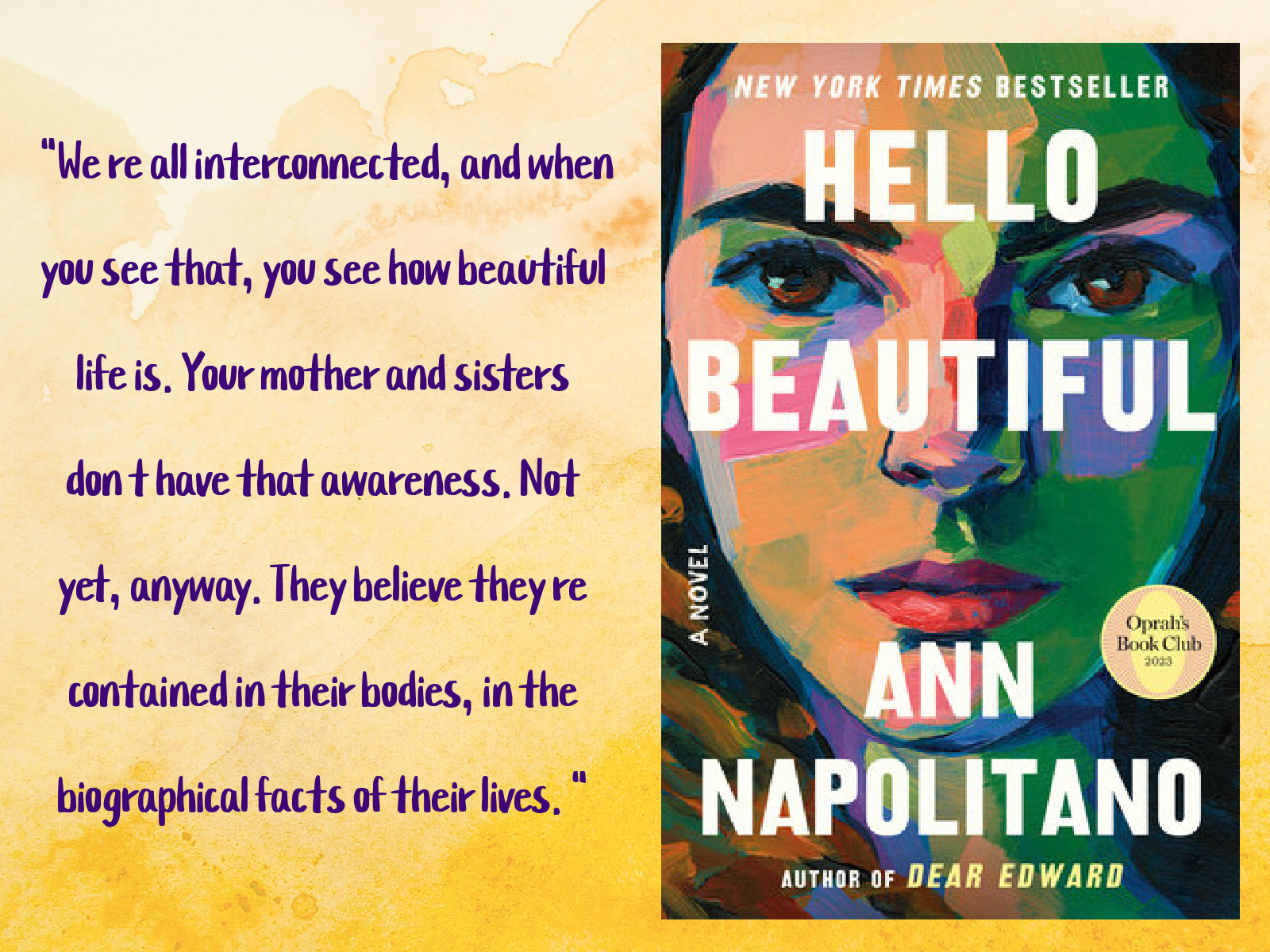
Everyone in My Family Has Killed Someone, by Benjamin Stevenson: The Cunninghams have gathered at a mountain ski retreat for an unconventional (and not quite happy) family reunion. But as our narrator Ernest (an author who writes how-to manuals for mystery novelists) lets us know from the outset, everyone in this family has killed someone—even him. So when one an apparent murder takes place at the resort, then another and another, we shouldn’t be surprised. The only question: who among this family of killers is guilty of these crimes?
This book is being described as Knives Out meets And There Were None, so I knew going in this would be a good fit for me—and even my very high expectations were exceeded. I LOVED this novel! Family dramas and locked room mysteries are a dime a dozen, but the combination of these two genres in a somewhat unique setting (I am pretty sure this is the first book I’ve read set in an AUSTRALIAN ski resort) makes this book particularly engaging. The true highlights, though, are 1) the comedic tone—something I’ve found I really love in my mysteries, such as Finlay Donovan and The Tuesday Murder Club (Benjamin Stevenson is a stand-up comedian in addition to being an novelist, and it shows! ) and 2) the unique narration. Sarah of Sarah’s Bookshelves Live describes this witty and personable narrative style as “voicey,” and “voicey” books are some of my favorites. I’ve seen mixed reviews of this aspect of the book, but I loved the way that Ern Cunningham engages the reader, offering commentary on his family and, more interestingly, on the book-writing process. He uses this novel an examination of the mystery genre, beginning with “10 Commandments of Detective Fiction” and referring back to these throughout the book.
Because of the lighthearted tone and smart prose, I was not prepared for the intricacies of the story itself. We are presented with numerous mysteries that weave in and out of each other, propelling us forward and backwards through the history of this very complicated family. This book requires very careful reading, as there are numerous clues and callbacks sprinkled through the pages. I always enjoy playing along in my books and this one had me totally stumped MANY times, something I found delightful. A few elements are a little spoof-y or over-the-top, but the narrator’s drawing attention to these made them interesting/quirky rather than cheesy.
Despite the high body count, this isn’t particularly graphic, though there is some sensitive subject matter (including the deaths of a few children) and some harder themes—mostly related to the ways that family members hurt one another, and how we choose to relate to (or disregard) each other. A major theme in the story is our connection to family history and legacy and how that affects the way we see ourselves and how we show up in the world. These issues are not heavy-handed but they do make an appearance and prompt some interesting reflection.
I see that there is a second book in this series slated for release this fall and I can’t wait to read more from this author! (This book works perfectly as a standalone, but I enjoyed our narrator so much I’m chomping at the bit to get more from him.)
My Rating: 5 Stars // Book Format: Print (Given the complexities of the stories and huge cast list, I would not attempt this on audio or ebook, as you’ll want to do a lot of flipping back and forth.)
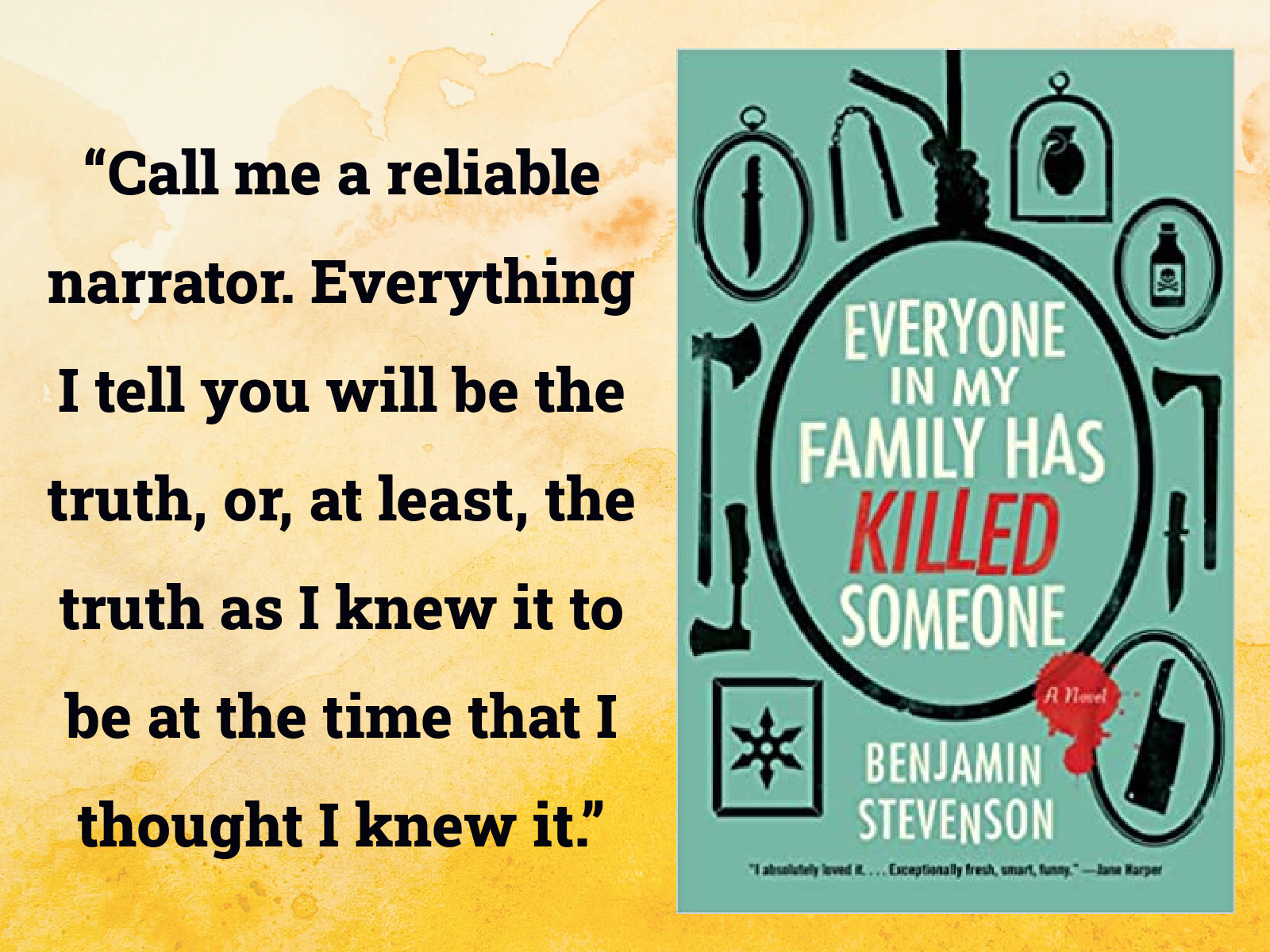
Have you read any of these titles? If so, I’d love to hear your thoughts!
[…] This is an intriguing title and beautiful cover! Thanks for putting it on my radar Kendra @ KendraNicole. […]
Thanks for the books on women in ministry, Kendra. And don’t give up on your dream of seminary, girl. God has the most amazing ways of opening doors that we thought were shut tight. He is able.
I love that, Linda, thanks for the encouragement!!!
Anne recommended Hello, Beautiful to me in a Patreon What Should I Read Next post, but I haven’t gotten to it yet. I didn’t read Dear Edward but I’m in the middle of the Apple TV show and am enjoying it a lot. Gretchen’s book is on my list too as I always love her books.
Many people are loving Hello, Beautiful, I’m definitely an outlier. I haven’t watched Dear Edward and I’m curious how similar it is to the book, I can be picky about my adaptations!
I looked forward to Hello Beautiful because of the glowing reviews. It was almost a dnf, but I ended up skimming it. Well written just too sad. 3 stars.
I’m fine with sad books usually, but this just didn’t work for me. I’m surprised by how many people are loving it.